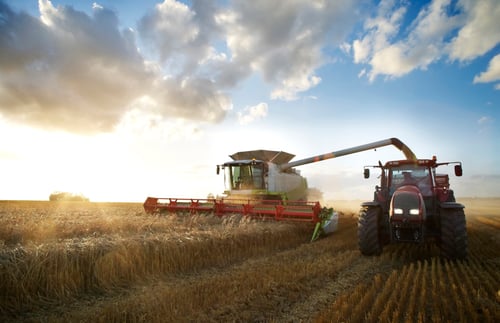These are the smart farming innovations for original equipment manufacturers (OEM)

Smart farming: a hot topic that is keeping the agricultural sector busy. And for good reason. With the world's population growing and a rising food shortage looming, the need to produce as much food as possible is becoming urgent. Farmers are looking for better and more efficient production methods in order to produce the maximum yield from every piece of land. Preferably with as few hands as possible, as manual labor is scarce and expensive. How can we ensure that as few people as possible are needed to provide efficient care for animals or cultivate the land in a smart way? Exactly, through automation. In this blog, we discuss our top 3 smart farming innovations for agriculture and livestock farming that you as an OEM engineer can benefit from.
Of course, there are plenty of smart farming innovations to mention. In fact, in the Netherlands we are already pretty good at getting as much yield per square meter as possible. Advanced even. But that still involves a lot of manual labor. As you can see, there are still gains to be made in this respect. So what innovations are most relevant now?
Smart farming innovation 1: autonomous machines
You are starting to see them more and more: agricultural vehicles that can work the land autonomously. For example, for plowing the land, seeding, harvesting, maintenance or weed control. If that same vehicle is also able to remember coordinates, then it will know the exact route where it has to perform specific follow-up work. In greenhouses, too, more and more robots are moving around taking care of plants or bringing in the harvest. Innovations in this field are mainly focused on positioning, locating, assessing and accurately processing the product. Sensors are indispensable for this. The possibilities and applications are endless!
In livestock farming, there is also more and more work being done automatically. You see companies having cows fed automatically and stalls cleaned by a robot. This provides some farmers with the freedom to do other tasks, in other words, making and selling their own products. For example, sometimes a complete dairy factory is located next to the farm that can supply supermarkets directly. It's also better for the environment as there are fewer transport movements. In short: vehicles and machines are getting smarter and taking work off your hands.
Smart farming innovation 2: sensor technology and data management
If you are planning to work with autonomous machines and robots, you naturally want to know if they are doing the job properly. Has the robot actually ensured that the right depth was maintained and whether the crop was sown at the right distance? You can measure all of these aspects using sensors. The measurement data are stored in a database via the cloud. This allows farmers to monitor whether all of the work is being carried out in the best possible way.
The data are also important for later, enabling farmers to assess whether or not improvements can be made. For example, if the yield is less than expected, crops may need to be placed 5 cm closer together. In short: you need data to optimize and improve processes. That's what's referred to as precision agriculture. From the moment you put something in the ground to the moment you start harvesting, you will know more and more about how it is being done and how you can improve. You can even link weather reports to the data, so that you know whether it's best to mow today or a week later. That's why a lot of innovations involve GPS, sensor technology such as sensor fusion and the internet of things (IoT), which are incorporated into agricultural machinery.
Smart farming innovation 3: the use of drones
Drones are also playing an increasingly important role. Using infrared cameras, drones can take images of fields, allowing farmers to see exactly how their crops and soil are doing and where there is a lack of nutrients, for example. Instead of putting the same amount of fertilizer everywhere, you can make sure that the fertilizer is perfectly distributed and used in the areas where it is needed most. Or recognize pesticides early and identify any potential deficiencies. The same applies to crop density or other parameters. If this varies in certain areas or if plants differ in size, farmers can respond by making better use of the space and adjusting the nutrients used. Better for the land, better for the environment and better for the bottom line.
Using smart sensor solutions to innovate your machine?
In short: there two major aspects to smart farming. It's about increasing yield and reducing manual labor, primarily by making the process more transparent. Sensors and data are indispensable for these innovations.
Are you looking for the smartest technologies for your machine and want customized advice? Then turn to a specialist. You can read why this always pays off in the end here. At Sentech, we have years of experience in this sector and are happy to work with you to find the ideal solution.


.png)

